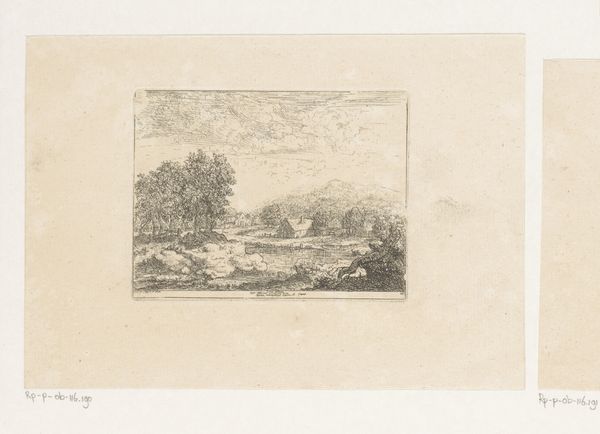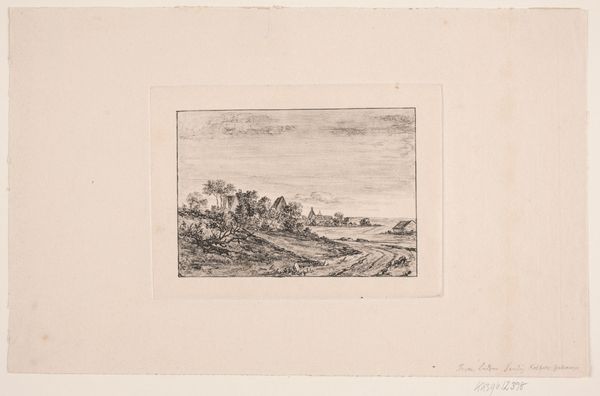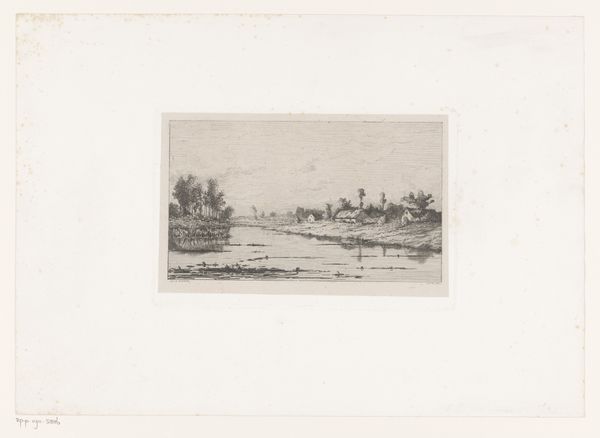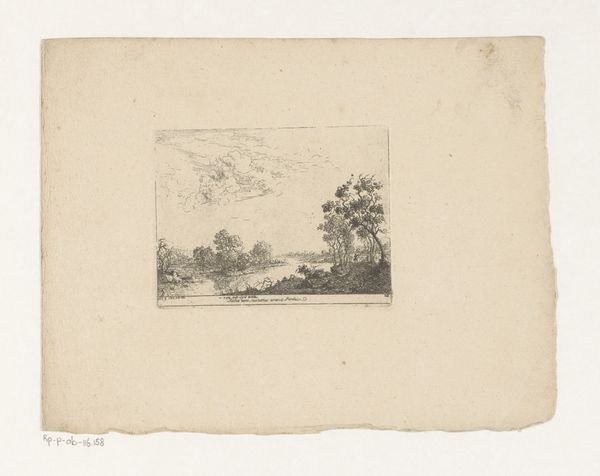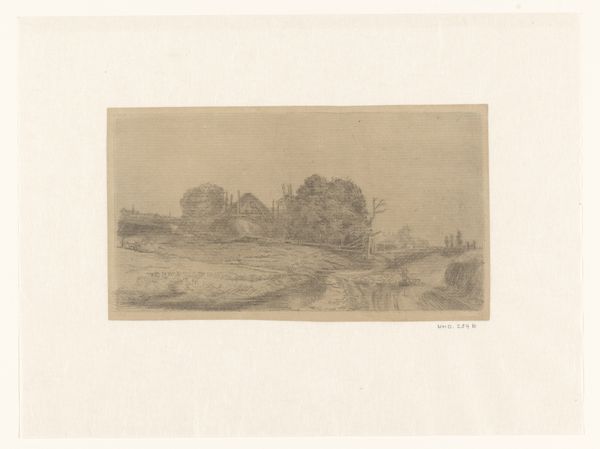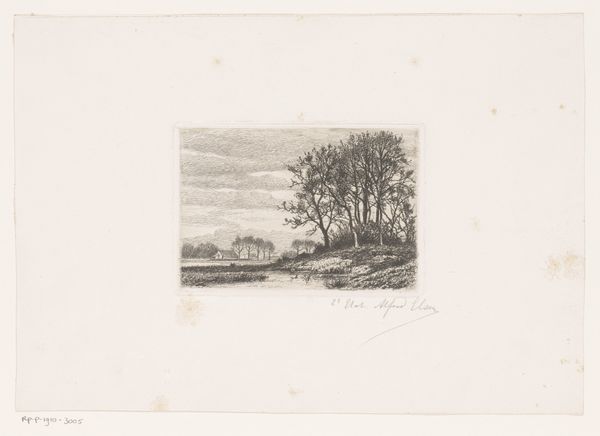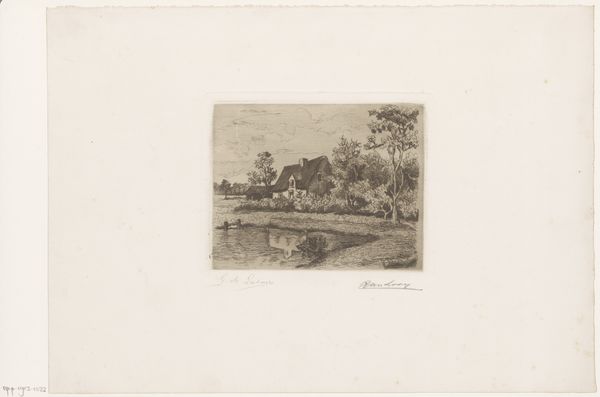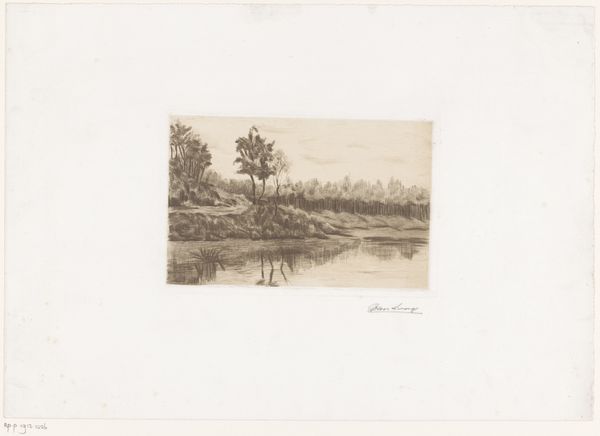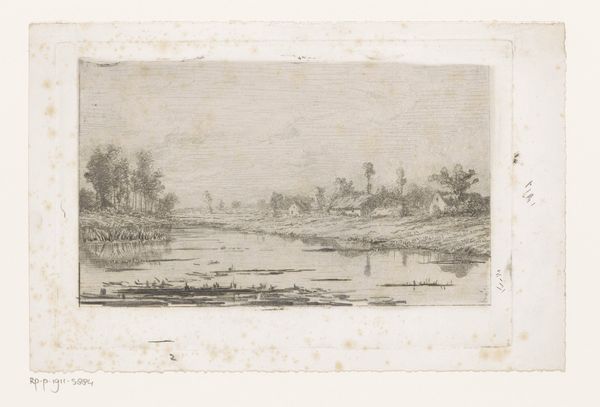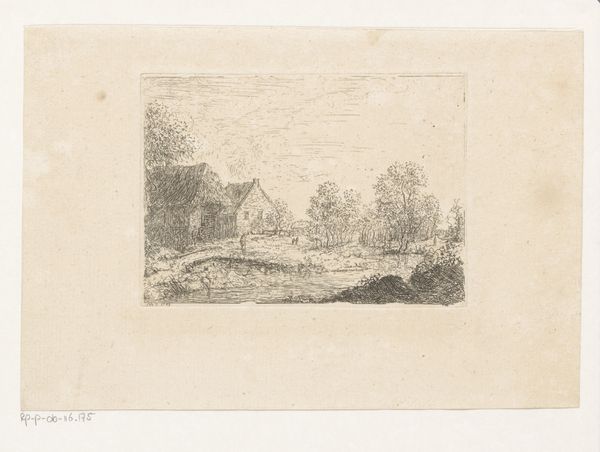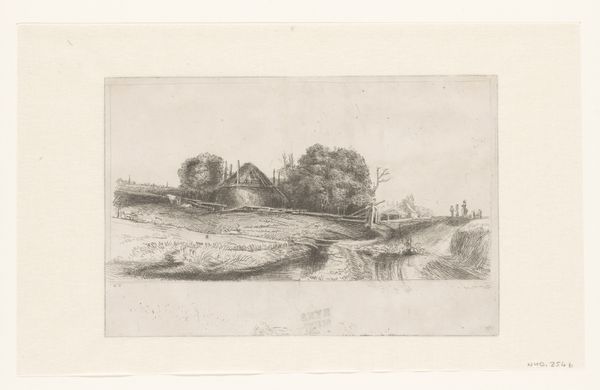
Dimensions: height 147 mm, width 198 mm
Copyright: Rijks Museum: Open Domain
Jerôme Tuyttens made this wintry village landscape as an etching, meaning that he used acid to cut into the metal plate from which the print was made. This intaglio printmaking process allowed for fine lines and subtle tonal variations, capturing the stark beauty of a rural scene. Without any explicit date, it's difficult to place this piece precisely in its social context, but we might consider how the development of printmaking as an artistic medium democratized access to images. Unlike unique paintings or sculptures, prints could be reproduced and distributed more widely, potentially reaching a broader audience beyond the wealthy elite. Images of rural life, like this one, may have resonated with urban populations, offering a glimpse into a world increasingly distant from their own experiences. To better understand Tuyttens’ intentions, we'd need to delve into the art market and exhibition culture of his time. We can look at the circulation of similar images and the critical reception of his work, hopefully shedding light on how he and his contemporaries viewed the relationship between art, society, and the changing landscape of Europe.
Comments
No comments
Be the first to comment and join the conversation on the ultimate creative platform.
